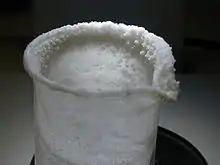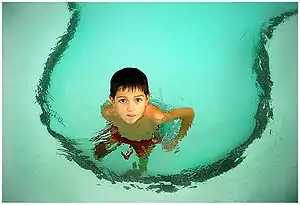

What does it look, feel, taste, or smell like?

Chlorine as an element is a pale green, poisonous gas with a suffocating odor. Chlorine as a chemical cleaner (in a solution with water) is a liquid, which is colorless with little odor, and a distinctly chemical taste. Chlorine can cause a burning sensation on the skin.
How was it discovered?
Chlorine was discovered in 1774 by Swedish chemist Carl Wilhelm Scheele.
Where did its name come from?
Chlorine gets its name from the Greek word chloros, which means "pale green".
Did You Know?
- Chloride, the ionic form of Chlorine, is the most abundant dissolved substance in seawater.
Where is it found?
In nature, chlorine is mostly found as chloride, the ionic form of chlorine. Chloride is very common in seawater as part of sodium chloride, the scientific name for salt. In a laboratory, chlorine gas can be generated by the rapid combination of a strong base and a strong acid, or by running electricity through a solution of table salt (which is NaCl, the most common salt in seawater and the best-known, and probably the most common, chlorine compound n the world.)

What are its uses?
Chlorine is commonly used to purify water so it is clean enough to bath in. Almost all public pools use chlorine as a cleaning chemical for water. Chlorinated water can be toxic at high concentrations. Chlorine as a gas is incredibly dangerous, and has been used as a chemical weapon. Chlorine is also used in bleaches.
Is it dangerous?
Yes, when chlorine is concentrated in a gaseous form, it is extremely toxic to humans, killing within minutes of exposure. The gas burns lungs when it is inhaled, and victims of inhalation most often die of a combination of axphyxiation and internal bleeding from damage to the airways.